gipuzkoakultura.net





During the first century B.C. Gipuzkoa gradually fell under Roman sway, and the evidence indicates that the initial influence increased to a point where the territory had become part of the Roman order by the end of the century.


During the period of the Sertorian skirmishes a number of silver coins, which must have represented a small fortune at the time, were hidden in a cave at Usategi in Ataun. The trove consists of eight Iberian denarii minted in the native cities of Baskunes (a mint which has been identified as being in Vascon territory or Pamplona), Turiasu (Tarazona) and Segobrices (Cabeza del Griego, Cuenca). They all follow the same design, bearing a face with its hair in ringlets on the obverse and a mounted horseman on the reverse. They reflect the new trading customs introduced with Roman conquest, although native attributes are maintained. The Ataun trove points to the existence of trade with the Ebro valley, and is the earliest evidence of Roman influence in Gipuzkoa.
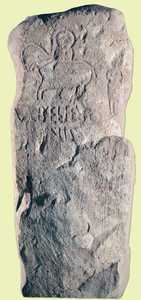
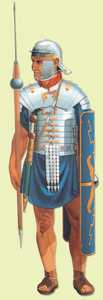
The Augustan coin discovered in the excavations at Beraketa Street in Irun can be dated to about 10 (12 - 6 A.D.). Nearby, in the environs of the parish church of the Virgin of Juncal other finds from the Augustan age have been made, amongst them several articles of crockery baked in Italic potteries. These mark the beginnings of a series of material changes which would transform the life of the most important population centres, in which the urban model developed and implanted by Rome throughout the territory it controlled would be repeated. As clear evidence of a series of transformations taking place at the beginning of the Christian era we may cite the stele of Andrearriaga, a standing stone which has marked the municipal boundary between the towns of Oiartzun and Irun since at least the fifteenth century. This burial stele makes reference to a personage who adopted a common Latin name but it also includes reference to his native forbears: Valerius, son of Belteson, demonstrating the link between the pre-Roman culture and the new Latin or Roman practices.
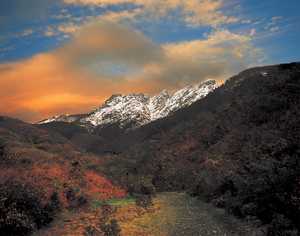
Coinciding with the subjugation of the Cantabrian tribes a gradual but continuous increase in Roman culture can be observed in the Bidasoa estuary. There is evidence to suggest that this was the result of military actions undertaken from the northern side of the Pyrenees, linked to an Aquitanian focus of influence and probably to the military camp of Saint-Jean-le-Vieux at Donibani Garazi (Saint Jean Pied de Port). The focus of Roman interest seems to have to have been the silver mines of the Aiako Harria area, which are contemporaneous with the alluvial gold works of the Errobi River, the mines of Itchassou in Labourd, and the silver mines in Aldudes. These mines probably concentrated on the extraction of precious metals, necessitating complex planning and a sizeable work-force to undertake the large-scale movements of earth required. Supplies probably came from the port of Bordeaux, from whence were distributed the products of the Garonne basin, including crockery from the pottery works of Montans.

Evidence of crockery from Montans in the Bidasoa ceases abruptly after 70 A.D., to be replaced by articles from La Rioja. This change in the provenance of the pottery, denoting a change in the centres of influence which shifted towards the Ebro valley, was accompanied by other historical events whose consequences extended beyond the Bidasoa and the Gipuzkoan coastal area.

Since the very origins of the city, the history of Rome had been marked by conspiracies, assassinations and brutality, all used as means of achieving power. With the inception of the Empire in the time of Augustus all manner of intrigues were hatched in order to ensure the continuity of family candidates in the imperial succession. Tiberius was affected for life by having had to divorce his first wife, whom he loved, in order to marry Augustus' daughter. Caligula's insanity can be explained by the murder of his brothers and the death of his mother, exiled to the Isle of Pandataria on Tiberius' orders and left there to die of hunger. Claudius was only proclaimed emperor because he happened to be found hiding behind a palace curtain by the Praetorian Guard, just when they were looking for a successor to the imperial throne to prevent the restoration of the Republic in the wake of Caligula's excesses. Nero was another emperor whose insanity may be traced back to childhood traumas (when he was three he lost his father and was separated from his mother). The Senate declared him a public enemy and decreed his death, but he committed suicide with the aid of his secretary. Thus the Julio-Claudian dynasty founded by Augustus came to an end. After a civil war lasting just under a year Vespasian was elected with the support of the eastern legions. Already 60 years old when he was crowned emperor, he ruled for ten years; his sons Titus and Domitian, in that order, succeeded him, making up what is known as the Flavian Dynasty.
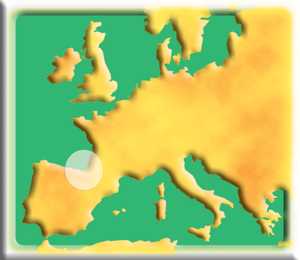
To Vespasian are due the initiatives which favoured the commercial and economic development from which the Basque coast and Atlantic territories benefited. Although the conquest of Britannia had begun during the reign of Claudius, under Vespasian the Roman fleet reached Scotland. In 73 -74 A.D. Vespasian granted Latin law to all of Hispania. Under this new jurisdiction, which was implemented in stages, those who held public office in municipal administration gained Roman citizenship, a concession which favoured the development of cities. As a result of this new state of affairs Roman interests in Gipuzkoa were refocused: the port of Oiasso (Irun) was expanded, ceasing to be merely an economic centre for silver mining and accruing other more important functions to become a regional port for the Bay of Biscay. Indeed, such transition was a standard feature of Roman expansion: the economy of newly-conquered territories developed from the simple exploitation of natural resources as a means of meeting occupation expenses to the generation of surpluses and the transformation of production structures.
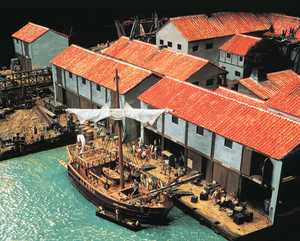
In 97 A.D. the Senate named Nerva emperor. The new dynasty, the Antonine, which came to power in 97 A.D. and lasted until 192 A.D., oversaw the zenith of Rome's greatness, although by the end of the period a crisis had begun which would fully erupt in the third century, ushering in the period of decline.
Throughout all these years the civitas of Oiasso retained its vigour, trading over a wide area which included the lands on the left bank of the Garonne, the middle valley of the Ebro, the western slopes of the Pyrenees and along a coastal stretch running approximately from Bordeaux and Santander. Long-distance trade was also engaged in, if only sporadically, and imports are documented from the Eastern Mediterranean, Andalusia and the Gulf of Narbonne. The rest of the Gipuzkoan coast seems also to have benefited from this favourable state of affairs, as indeed did the hinterland, as the finds at Eskoriatza and Urbia prove.
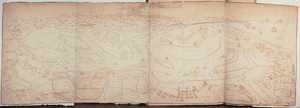

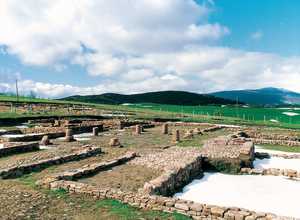
After emerging victorious from the civil war, Septimius Severus founded the dynasty of the Severi, which included his sons Caracalla and Geta and other emperors up to Severus Alexander. Caracalla extended Roman citizenship to all inhabitants of the Empire 212 A.D. The subsequent period of rioting, known as the "military anarchy", lasted almost until the end of the century. One emperor after another was appointed by the armies until Diocletian, of humble origin, succeeded in reorganising the government and holding power for over twenty years. However, the decline was by now irreversible and the break-up of imperial territories, the problems with the Barbarian tribes and the Christian movement would together undermine the Roman system to the point of rendering it unrecognisable. Hispania became a diocese dependant on the Prefecture of Gaul. Juliobriga (Reinosa), Veleia (Iruña de Oca) and Lapurdum (Bayonne) each became the seat of a cohort tribune, a high-ranking military officer, and were equipped with important defensive fortifications. Products from the North of Africa still reached the port of Oiasso, but trade gradually dwindled to a trickle.

Emperor Constantine legalised Christian worship in 312, while Theodosius elevated it to the status of state religion in 380. It was during the latter's reign that the Goths were allowed to settle within the imperial boundaries, between the Balkans and the Danube, in return for safeguarding the Danube-limes; the bishops proclaimed the superiority of religious over imperial authority and went so far as to excommunicate the emperor himself; finally, the empire was divided between the emperor's two sons - the East going to Arcadius and the West to Honorius. After the division Vandals, Alani and Ostrogoths invaded the western empire and the Gothic chieftain Alaricus seized the opportunity to lay siege to Milan and advance as far as Rome. A fresh invasion took place on New Year's Eve, 406; with the Rhine frozen over, Vandals, Suevi and Alani crossed over to the west, succeeding in reaching the Pyrenees and entering Hispania. One by one, the empire lost its territories until only Italy remained in imperial hands. Even here, in September 476, during the reign of Romulus Augustulus, Odoacer, an officer of the imperial guard and son of a Barbarian king, managed to persuade the troops of the last Roman navy to mutiny and proclaim him emperor.
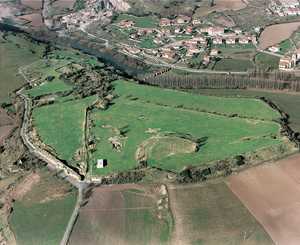
These changes are reflected in the archaeological evidence collected in Gipuzkoa. The thriving Oiasso of the first and second centuries shows scarcely any sign of economic activity in this later period. The quays of its port appear to have fallen idle, its hot baths to have been used for stabling livestock, and the memorials in its cemetery to have been allowed to fall into ruin. Getaria too, seems to have been deserted. In contrast, there is evidence of a significant return to cave-dwelling, possibly on account of a resurgence in livestock herding. The salt-mine of Dorleta in Leintz-Gatzaga and the ironworks on the hill of Arbium in Zarautz are the only two production centres which are known to have been in use at this time. Coins and decorated crockery unearthed from this period contain Christian symbols, evidence of the prevalence of the new religious movement.
The abrupt break with Rome from the fifth century onwards is surprising. The geography of the area made it vulnerable to Barbarian attacks: it lay close to major communication routes - especially the crossing of the Pyrenees - and was easily accessible from the sea. In 428 Aquitania surrendered to the Goths; in 449 Rechiarius, king of the Suevi, sacked Vasconia; in 445 Herulian ships attacked the coastal area inhabited by the Cantabrians and the Varduls; in 473, the Gothic count Gauderius entered the area through Pamplona and conquered Saragossa and its neighbouring cities.